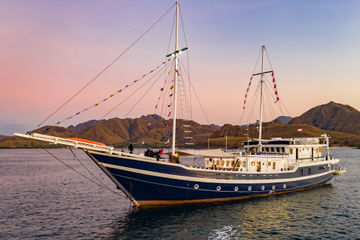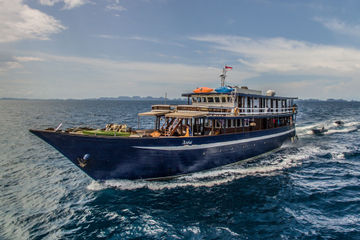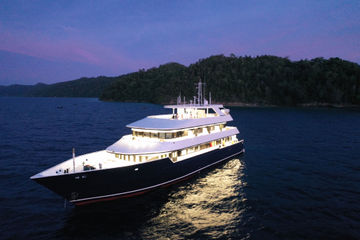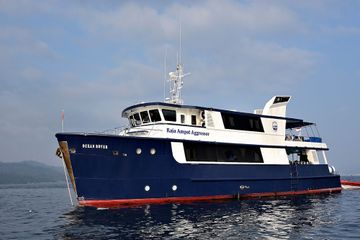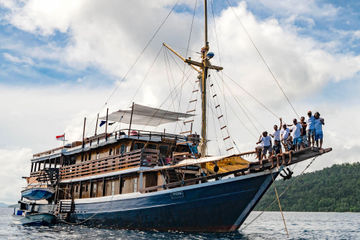Popular Halmahera liveaboards Explore all liveaboards
Liveaboard Diving in Halmahera
What to Expect On a Halmahera Liveaboard
A liveaboard to Halmahera is something special regarding unexplored regions in Indonesia. It's the largest island of the Moluccas, situated in the north. It is rapidly growing in fame as a prolific dive site, more than capable of matching the species diversity of neighboring Raja Ampat.
The best time to visit this region on an Indonesian liveaboard is from March to November, during the dry season. However, it should be noted that strong trade winds hit the islands in July and August. Water remains at an almost constant 84 Fahrenheit (29∞C) throughout the year with barely any fluctuation.
Halmahera Underwater
Liveaboards who depart from Halmahera will initially head south before heading west to follow the archipelagic chain of islands. There are many different sites to visit, including muck dives, drift dives along deep walls, coral gardens, and even volcanic rock formations that are now totally encrusted by corals. You will find true cavern zones, swim-throughs, and large overhangs, which can be an ideal spot for a resting shark, as well as tiny cracks and crevices inhabited by macro species. From the small amount of diving we have done in this region, we have discovered many unspoiled sites; we know there are still many more to find.
Dive Sites of Halmahera
Traveling by liveaboard, many sites are available, and even more, sites are not yet known. Cruises in the Moluccas are particularly special because there is always the chance to identify a new species or discover new wreck sites.
Sailing over the Halmahera Strait, seeing epically big pelagic fish is possible. Hammerhead sharks, barracuda, oceanic whitetip, blacktip reef sharks, and even manta rays.
Shark Mountain is a submerged island and a very deep site. The initial depth is 100 feet (30 m), and several shark species can be seen patrolling the island's circumference. Napoleon wrasse are also present, as are large shoals of barracuda. This is an especially exhilarating site to dive into.
Napo Siko has been described as the best wall dive, although there are plenty more sites to discover that can match the beauty of this pristine wall. Hawksbill and green turtles are often spotted here, as are oceanic whitetip and blacktip reef sharks. Napoleon wrasse moves in groups between large growths of coral formations, while enormous sponges provide excellent shelter for invertebrates.
Pisang Island is another favorite of liveaboard divers. The small island, seemingly in the middle of nowhere, is surrounded by several other small islands. Beneath the sea, they all join along wide ridges and are now home to very dense gardens of coral. Huge vases and branching corals are found here, while the strong currents attract barracuda and several shark species.
Top Tips for Divers
The nature of diving on liveaboard vessels that visit the northern region of the Moluccas is better suited to the more experienced diver. Many dives will be explorations, which means there is sometimes little information to use when planning dives.
Getting to Halmahera
Halmahera is most easily reached from the neighboring island of Ternate, where Sultan Babullah Airport is located. Daily flights from Jakarta and Manado from their international airports are available to reach Ternate. Flying to Jakarta or Manado is relatively easy, with many direct flights available. Long-haul flights tend to connect via Singapore and sometimes Kuala Lumpur.
Many dive cruises that venture to this unexplored region also leave from Bitung, on the northern coast of Sulawesi. If so, this is just a short trip by car or taxi from Manado International Airport.
